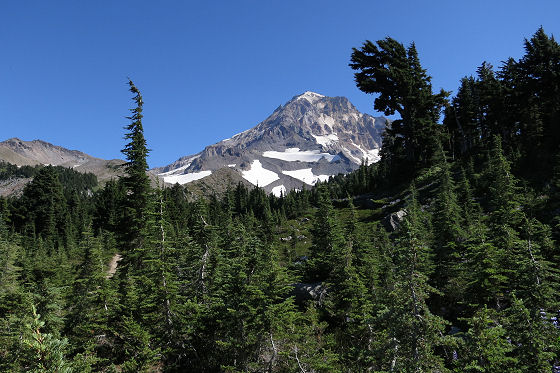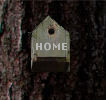About this Guide
This guide will
help you
identify the conifers of the Pacific Northwest, native to the states of
Oregon and Washington. The guide also includes trees in the Idaho Panhandle.
It's easier to identify trees if we can focus
on those native
to a specific area. If we narrow the scope even more to
just the
conifers of northwest Oregon
and
western Washington, about 20
species are native to the area. Since different conifers live at
different elevations, we can also use elevation to narrow the choice of
conifers native to a given area. For example, only a few
species
grow at elevations below 2000 feet, and it is easy to
identify each. This guide is organized to help you identify
conifers by
presenting them by area and elevation and showing photos and simple
descriptions of identifying
features for each conifer native to that zone. Alternatively, you can
navigate to any northwest conifer from the All Conifers page or find an
individual conifer in the Index.

Subalpine
conifers on Mt. Hood
About Conifer Names
Common names:
Like most plants, conifers have names that are
determined by common usage. Sometimes a conifer will have several
common names used in different regions. Common names can also be
misleading. The Douglas fir is not a true fir, and none of the native
trees called cedar are true cedars.
Scientific names:
Each conifer species also has a scientific name. Why learn the
scientific name? These names give you an unambiguous way to identify a
species. These names are assigned and agreed to by botanists based on
rigorous classification of each plant. Each species is assigned to a
general grouping or genus
and given a unique species name. The names are usually Latin or at least given
a Latin ending. The name for a species is written in italics as Genus species with the genus name
capitalized. For
example the scientific name of grand fir is Abies grandis.
This name is universal throughout the world, no matter what language is
spoken.
As a practical
matter, knowing the scientific name usually
tells you something about the tree. For example, the name of western hemlock is Tsuga
heterophylla. Tsuga is
Japanese for hemlock. And heterophylla
means variable leaves, which aptly describes western hemlock needles.
Also, if you want to learn more about a tree, it helps to know the
scientific name. Much of the scientific literature will refer to it by
the scientific name. Familiarity with these names will prevent a lot of
confusion and consternation. Of course, that's not to say that there's
no confusion with scientific names. They may change. Science is not
static. As botanists learn more about a tree, they may change its
classification to a different genus. These changes generally generate a
lot of discussion among the experts and confusion for the rest of us.
Such a discussion has been raging about the classification of Alaska cedar. It was in the genus Chamaecyparis.
Recently someone proposed putting it in a new genus called Xanthocyparis.
Others have
countered, saying it should be classified as Callitropsis, Cupressus
or Hesperocyparis.
Botanists had a
terrible time classifying Douglas fir. Its name changed 21 times before
they finally settled on Pseudotsuga
menziesii.
About the Author
 |
Text
and photos in this guide are by Ken Denniston, who lives in Hillsboro,
Oregon. He has hiked the woods of the Northwest for over 50 years where
he became acquainted with the magnificent conifers of the region. After
learning their names at Hoyt Arboretum in Portland and completing the
Oregon Master
Naturalist program at Oregon State University, he began leading tours
of the conifers planted at Hoyt Arboretum. In 2011 he
started this
website on native conifers.
Contact Info: ken.denniston@gmail.com.
|
|
|
|
|
How
to identify conifers
Start
by looking at the Low-elevation
Conifers. Once
you are familiar with them, you can move on to conifers in other areas.
Where
to find native conifers
A
good place to start
looking for low-elevation conifers is
a nearby nature park where native conifers have been allowed to grow.
For example, in Portland's Forest Park or the Tualatin Hills Nature
Park in Beaverton, you can find all the inland low-elevation
conifers of northwest Oregon and western Washington. Hoyt Arboretum
in
Portland is an excellent
place to look for
conifers. It has specimens of conifers from all over the world,
including most of the species native to the Northwest.
You
can find the
low-elevation conifers growing throughout the
Coast Range and in the lower elevations of the Columbia Gorge
and Cascade Mountains. To find higher-elevation conifers
growing
in their
native habitat, you will want to travel to the Cascades, although you
can find some mid-level species growing in the Coast Range, for
example, the higher elevations of Saddle Mountain near Seaside.
Higher-elevation conifers also grow in the Olympic Mountains in
Washington.
|
|
|
|
|
